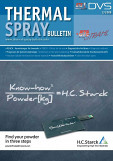Thin and dense yttria-partially stabilizedzirconia electrolytes for IT-SOFC manufactured bysuspension plasma spraying
Peer-reviewed Papers
Authors:
Elodie Brousse,
Alain Denoirjean,
Ghislain Montavon,
Helene Ageorges,
Jean-Francais Coudert,
Karine Wittmann-Teneze,
Nadege Caron,
Pierre Fauchais,
Vincent Rat
Intermediate temperature - solid oxy-fuel cells (IT-SOFCs) include in their design a solid electrolyte layer made of yttria-partially stabilized zirconia (Y-PSZ), an ionic conductor, through which oxygen ions diffuse. This layer needs to fulfill several characteristics among which a low leakage rate corresponding to a non-connected
pore network and a low level of stacking defects such as microcracks or globular pores. Moreover, the thickness of this layer needs to be as low as possible (about 20 μm) in order to limit ohmic losses. Suspension plasma spraying (SPS) appears as a potential technological route to manufacture such layers structured at micrometric or sub-micrometric scales. In SPS, a stabilized suspension, made of a liquid solvent, solid particles and a dispersant, is injected within the plasma flow. The liquid is very quickly fragmented and then vaporized and the individual particles, or the particle agglomerates, depending on the average size and morphology of the solid feedstock, are heated and simultaneously accelerated towards the substrate surface where they impact, spread and solidify, analogously in a first approximation to larger particles, to form a layer. The architecture of the layer is very closely related to plasma operating parameters (from which derive plasma flow stability), from the suspension characteristics, in particular the feedstock particle size distribution and from the suspension injection parameters. This work aims at presenting recent developments made to optimize some of these operating parameters to maximize the electrolyte layer characteristics.
Order this article as a PDF for 8.00 Euro. Send us a short e-mail with your details.
















